The US Air Force shared a draft request for proposal for the Light Attack Aircraft with Sierra Nevada/Embraer and Textron Aviation following the conclusion of the second phase of the Light Attack Experiment.
According to a press release, the US Air Force say that this is the first step in working with industry towards the final RFP release that is expected in December 2018. US Air Force acquisition officials indicated there are items that still need to be finalised prior to the release of the final RFP, but it is prudent to begin the dialogue with industry in order to adjust the RFP as appropriate in order to meet the timelines.
“We must develop the capacity to combat violent extremism at lower cost,” said Secretary of the Air Force Heather Wilson.
“Today’s Air Force is smaller than the nation needs, and the Light Attack Aircraft offers an option to increase the Air Force capacity beyond what we now have in our inventory or budget.”
Wilson said in the past year the us Air Force has completed two flying experiments and drafted the Light Attack Aircraft request for proposal.
“We’re where we’re at today because both Congress and our industry partners understood the need to find ways to get capabilities to our warfighters faster,” she said.
Pilots flew the Sierra Nevada/Embraer A-29 Super Tucano and the Textron Aviation AT-6B Wolverine this summer as a live-fly experiment to gather additional information about aircraft capabilities, as well as partner nation interoperability, prior to a potential light attack purchase.
“It is important to look at the light attack aircraft through the lens of allies and partners,” said Air Force Chief of Staff Gen. David L. Goldfein.
“An interoperable light attack aircraft that delivers common architecture and intelligence-sharing network capabilities will enhance our collective ability to compete, deter and win across all domains.”


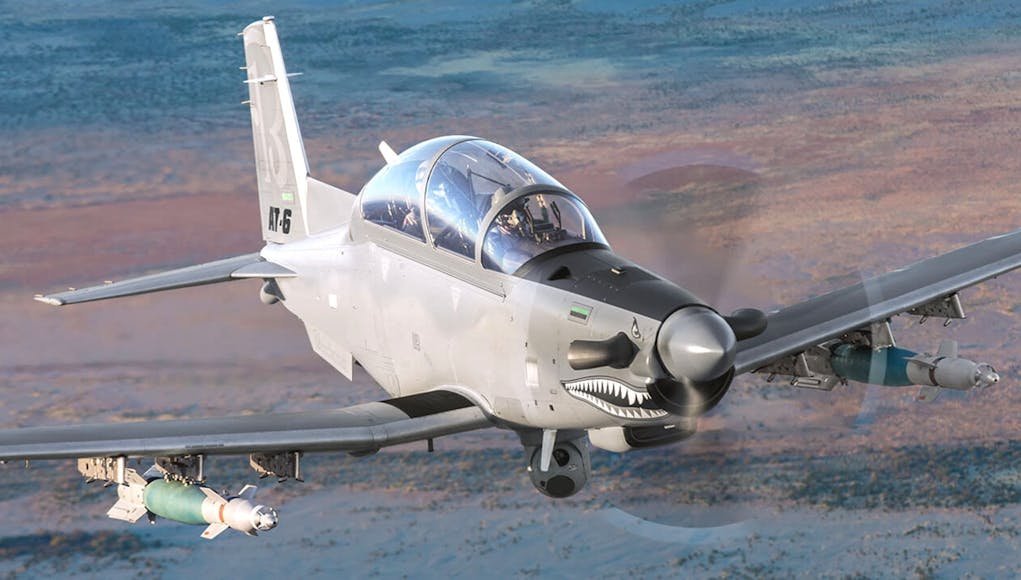
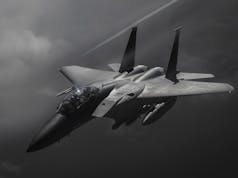

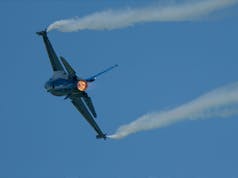
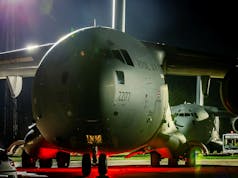
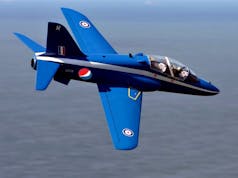
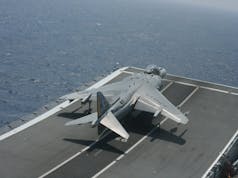
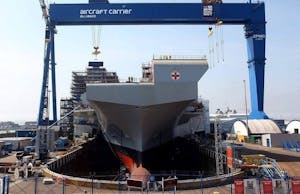









This is an interesting development. Going back to cheaper platforms to deliver close air support. I thought at the time of the Falklands that the Argue Puccara aircraft was probably their best attack platform. Fortunately the SAS and navy/ RAF harriers destroyed the force in the Falklands before they could really make an impact. Against low to medium threat targets a low observability, quiet, low flying turboprop aircraft like envisaged in this programme should be very cost-effective. Something for the RAF, RN and Army air corps to consider. Is this going to cheaper to buy and operate then Apache? Almost… Read more »
Are they really going to be any more effective or cheaper than a reaper though?
Depends how they arm them. Reaper has limited offensive options or carry weight. The greater carry weight and size of one of these, would be great for sustained CAS roles. How they hold up in a zone with basic shoulder launched SAMs / RPGs is yet to be seen.
If you are looking to see how they would fair in a environment with MANPADS look up the South American insurgencies. These militias or cartels depending on country have access to pretty much anything money can buy. They have been known to shoot down low flying aircraft like helicopters and small planes as well as recon drones relatively routinely.
would a hawk, fitted as they are now for sidewinder, be able to carry out duties as a light fighter?
Quite a few countries do, and the RAF during the 80’s augmented the Tornado interceptors with armed Hawks.
https://en.wikipedia.org/wiki/BAE_Hawk
Cheers!
The hawk is excellent as a light fighter platform. I have always thought we should have bought a number of Hawk 200s to carry out light ground attack operations. It is cheap to buy, run and maintain and every fast jet pilot in the RAF know how to fly one.
We had something similar once, it could carry out ground attack roles, look after itself in a hostile air environment, operate from improvised airstrips or a field even, and carry out precision strike. It was called the Harrier. It was scrapped.
For CAS – which is defined as release of ordnance within 600 m of friendlies – the Reaper can’t be used since the platform must be under the positive control of the JTAC (which is what Prince Harry did on his first tour) and receive a “Cleared Hot” call which authorizes the pilot to release ordnance or shoot the target. Due to the safety restrictions, CAS platforms still need to be manned to deal with fluid, chaotic situations, very detailed attacks in many cases, and finally – the ability to react quickly and precisely in an emergency – e.g. “We’re… Read more »
not to mention that there will always be a delay caused by time takes for signal to travel to the operator and this could cause problems in a fluid battlefield.
An Apache is in the region of $40mn, plus the higher running costs. A Super Tucano or Wolverine upgraded for combat is less than half of that (highest cost I’ve found for the Tucano is $18mn). So far cheaper than an Apache. Still, given how small our Apache fleet is right now, I’d much prefer more investment in gunships than light attack craft. Gunships can be flown off of the carriers for maritime strike and amphibious assault operations, they’re far more durable and better protected than armed trainers (there are some structural reinforcements to make them tougher, but at the… Read more »
These are strictly a low threat platform. Useful for what we’re doing now. A few squadrons / trainers / and spares would be useful in some cases. A large investment would be a waste of funds IMO…
Cheers
(Chris H) Looks like the USAF scrapped the Mustang far too early ….
(Chris H) But on a more serious note wan’t the A-10, possibly the greatest CAS asset ever built, one of the aircraft being dumped and replaced by the F-35? So they scrap the A-10, build an F-35 and then realise they need a slower, cheaper aircraft that can actually deliver heavy ordnance so go back to turboprops. Why not refurbish A-10s?
Forgive me but this is what happens when you give your military endless supplies of money. They lose the common sense that fiscal discipline demands.
It was touch and go there for a while Chris. The USAF did everything it could to retire the platform. Didn’t succeed in the face of dogged opposition from basically everyone. The USAF is now keeping about 200 of the aircraft and is in the process of rewinging and modernizing those birds.
Excellent uh – “choice” by the service….
http://www.airforcemag.com/Features/Pages/2018/January%202018/A-10-Rewinging-Will-Continue-in-2019.aspx
Cheers!
They are refurbishing the A-10s however Fairchild Republic went out of business. So parts are hard to come by and often have to be fabricated. While the USAF is very good at maintaining aircraft and upgrading them but they have to have the components to do it. The other thing is the A-10 is not being replaced by this program. Note the “through the lens of our allies and partners quote.” This is essentially a program to acquire aircraft for COIN and strings attached Foreign Military Aid. For places like Africa specifically Nigeria, Chad, and Cameroon where SOCOM has been… Read more »
(Chris H) Elliott – The Mustang comment was humour so do let us know when you find a sense of humour. If a country cannot manage to arm itself adequately running a 3.3% GDP budget then its more than common sense that has gone out the window especially given the huge size of the US economy. Most western countries scaled back after the Soviets collapsed. In 1980 the world average was 3.5% and now? 2.2% https://data.worldbank.org/indicator/MS.MIL.XPND.GD.ZS And Reagan era? In 1980 the UK was spending 4.2% GDP and the USA 4.6% (2010: 4.7%) and now 3.3% The difference between the… Read more »
Aren’t you glad the US relied on military power and intimidation to further its foreign policy from 1941-1945 and later? I hope the Germans, Italians, and Japanese were intimidated, and then later the Soviets.
(Chris H) David E Flandry – Oh dear God someone will always bring up WWII – and then rewrite its history. * The USA never joined WWII until December 1941 * We never saw any US troops here in the UK until November 1942 and then it was to ferry them to North Africa. * There wouldn’t have been a ‘D Day’ had we not built the harbours, provided 80% of the Naval resources, sunk fuel pipelines, kept the UK free and designed and commanded the entire Overlord operation. We landed more men on more beaches than the USA did.… Read more »
The height of the Reagan Era was 6.8 percent of GDP. 1980 when he took office was the Carter budget. The 3.3 number proves my point. The sequester cuts hit the US Military after 2010 hitting the Military in FY2013. Those cuts bit hard and much hader than at first glance. Most countries in the world did cut back after the Cold War. The term for that is parasites and political cowards who threw away investments in military infrastructure that took decades to make. All so they could handout goodies like they were Mardi Gras beads to buy votes. Your… Read more »
Fairchild didn’t go out of business, it was acquired by M7. What is a main business of M7? Aircraft parts, aerostructures manufacturing, and aircraft repair and overhauling.
Yes, new parts need to be fabricated. They needed to be fabricated under Fairchild too. The company didn’t build each unit with an infinite supply of spares, nor did it have a magic spares machine which plucked them out of thin air.
Their is a difference between fabricating small lots for individual repair jobs and series production/continued parts production.
M7 doesn’t make any new aircraft only parts. More recently it was bought by Elbit to increase it’s US holdings so that may change but I doubt it.
What the hell has the UK got to do with this aircraft, why not keep on subject as to the merits of this program rather than making petty jibes just for the sake of expressing your inate prejudices. You could at least save them for when there’s inkling of relavence
The A-10 is a not a great CAS platform. It is expensive to maintain and is not well suited to the role. It was designed to take out armour in a hot war and take heavy damage doing so. It is now useless for that role due to improvements in air to air weapons. The Apache has far greater accuracy and other aircraft are cheaper to run but offer similar performance. The A-10s massive gun is impressive but you would not want it to be used if the enemy were close to you as it is not very accurate and… Read more »
Have to dispute you on that observation Lee, I spent many years working with the A10. Still the only platform that can do all the jobs needed on the frontline. CAS, SAR, FAC, long loiter, heavy armor, and as the motto of the Syracuse NY ANG A10 unit goes – “Ugly but well hung”… With ordnance that is… Very happy to see them retained.
https://www.airspacemag.com/military-aviation/why-the-a-10-survives-180960962/
Cheers!
Can see the logic, but given Trump’s not much of an interventionist I doubt the winner is going to be used much. It’s for the last batch of wars.
Well if the USAF are serious about this maybe there’s some hope that the RAF will follow suit. We always seem to copy whatever the US does. It’s just a shame we didn’t try this a few years back when there was parliamentary debate about using our Tucanos. Unfortunately at the time the RAF threw a huge sulk.
(Chris H) David Steeper – so a decision based on the declared tactical and strategic policies of the UK means “the RAF threw a huge sulk”? #FacePalm We have absolutely no need for a combat Tucano. Any where. Any time. Any how. If we need such a converted trainer then we can build Advanced Hawk versions here in the UK and they will be 10 times better than a Tucano. Sometimes when the USA does something that is a very good reason for us NOT to do it. That isn’t a criticism its a recognition of the simple facts they… Read more »
The problem with how the military works is that top brass are an era behind where the modern world has moved to. We saw this very obviously in WW1 when the focus was still on house warfare in an era of machine guns. Again in WW2 when the royal navy ships were way behind fire power wise. Move to modern period and top bass are still planning around a cold war world and the impact of this was seen in Iraq/Afgan, where the gear was inappropriate. In 2018 we need a mix of top end gear and cheaper but more… Read more »
“The problem with how the military works is that top brass are an era behind where the modern world has moved to. We saw this very obviously in WW1 when the focus was still on house warfare in an era of machine guns.” Every major power at the start of WW1 used horses for cavalry and mounted infantry, the British get a little stick for using them the longest when the Germans got rid not long after the start. But while that is fair you have to put that next to the British military leaders revolution in battlefield methods, and… Read more »
Steve, horses were still valid as transport and part of an army in the early 20c, you have to remember that it was only the very specifics of trench warfare in a specific theatre of war that was unsuitable for horse Calvary and they were still very useful in other theatres. Horses still even had a use in the Second World War as many armies had not fully mechanised. Even the vaunted panzers divisions that sliced through the third republic were backed up by horse drawn logistic and artillery units. Infact going into the Second World War it was Britain… Read more »
I guess i made my point badly, I realise that these problems are not unique to UK and that many other countries have made the same mistakes, but mistakes they were. The US military had the same problem in Iraq/Afgan, just their strength of depth allowed them to bring lessor focused gear on mass to the front line. This is not a unique problem for the armed forces, the same problem occurs in every profession. Just look start up companies that have got big, they lose track of changes when they grow, as they focus on what made them big… Read more »
I know it’s not the point but these should be pretty fun to fly and could be quite good at airshows with a load of these buzzing about doing mock dogfights or airfield attacks.
Great response. My only comment is the strikeforce capability of the new carriers with the F35 is a pale imitation of that provided by previous UK carriers using the Buccaneer bomb truck and the Phantom. When you only have a few very expensive aircraft with limited range and limited bomb carrying capacity you can only threaten, you cannot actually deliver a killer punch. We have to make do with less. We will have two carriers but we will only ever be able to put one to sea at any time. Not enough escorts, unless we get help from our allies… Read more »
Because of various technologies we now need fewer weapons to achieve more than we did in the 60’s, 70’s, and 80’s.
If (when?) the QEC’s go to war they will probably be carrying USMC F-35b as well as FAA ones, and as part of a much great US lead effort. Our new carriers are more about joining in and supporting US operations than the UK doing any uni-lateral.
but this isn’t really true, it’s a myth that keeps being said to justify cuts. The first problem with them argument is that if you fight a peer or near peer opponent their gear has also advanced and so nullified the advantages of modern weapons. The main problem is that wars are really won or lost by boots on the ground and infantry warfare hasn’t really advanced much since ww2. Yes the best weapons of 2018 are better than the ak47 (a weapon from 1948) but only marginally and certainly one soldier with a modern weapon is not worth 10… Read more »
Absolutely right, you can never totally dismiss an exception to this, as we saw with the Falklands but outside of any exceptional military circumstance of that nature they will be operating with US or/and other allied forces.
The question i am struggling with, is how do you apply this logic to the navy. The navy’s role is predominately one of defense (ignoring the carriers), the role of almost every ship is to defend something, whether it is to defend troop carrying ships, carriers or merchant shipping or defending troops as the ship ferries them to land and defensive roles generally call on more high tech capability. This is why the OPV are pretty useless in a shooting war, since they are incapable of defending against anything other than unarmed ships/boats or insanely lightly armed ones, which wouldn’t… Read more »
Steve, the purpose of a navy such as the RN is as not just about defence, the sea has and always will be the main artery of trade, Britain has always been pivotal in European wars not because of our armies but because of the power of our geographic position and navy. even at its best the British army has aways been out massed by other European nations. France, German and Russia have flushed away more soldiers lives in their field armies over the last 200 years than Britian could ever contemplate doing. But what we have aways been able… Read more »
@Jonathan
Fair point.
I was going to post that this doesn’t change things, but thinking about it it does. In a very niche role, if you clear out a port of naval assets, a OPV could then prevent any merchant shipping from leaving the port. It is a bit of a risk strategy, but if you are confident that there won’t be a counter attack, then it would work.
People really shouldn’t get that excited about this program, the USAF doesn’t want a light fixed wing CAS/COIN type and will kill the program the first opportunity they get! The only reason they are even going through the exercise is because both the US Army and USMC expressed interest in the idea. Hell will freeze over before the USAF will allow the US Army in particular get into the fixed wing attack game! This is shades of the C27J Spartan all over again, an Army initiated program to get that service a much needed in theatre transport to replace the… Read more »
This is the same problems that have plagued the British military intra force fighting over resources, just with a smaller budget the in fighting cause a lot more harm to the British military. I personally think it is time to join the services, as it is inefficient to have so many top ranking caps and command and control roles, massive duplication is not needed with such a small military. However, as that would never politically fly and would never be suggested by the military (turkeys voting for christmas) maybe its time to remove the buying decisions from the services and… Read more »
In principle I agree that a joint service sounds a good idea, the problem is culture and human natures. In any joint service you will aways find one historic paradigm will win through and start to starve everything else for what it sees as the most important aspect. It’s one of the reasons the NHS( which is not a single organisation by the way) does not like an acute trust management team getting their “hospitals beds” focused hands on community services, historically that always seem to end up putting more and more into the acute hospital and less and less… Read more »
You hit on one of the biggest problems with the NHS there, it is not one organisation, but should be or at least the buying side should be. It was split into local trusts as a political decision of it doesn’t work, so we need to be seen to be changing things, without thinking it fully through in the long/medium term. This is the same thing with the trains, they split into local trusts thinking that they were creating competition, which in theory should create a better service. No question that if they actually created competition this would be right,… Read more »
Steve, yep internal/sudo markets are a total rubbish idea conpletly driven by the idea that the market is always right. Unfortunately it’s utter rubbish, the market a great way of managing simple production and distribution it’s rubbish for complex interdependent “cost based” systems like healthcare (the only fully market based western healthcare system is a basket case, sorry USA looking at you in an astonished “how much, are you bonkers kind of way). On the joint service issue the culture of “what we do is the most important” could be a nightmare. One arm of the forces will inevitably dominate… Read more »
Joint Services DO NOT WORK. The Canadians for one tried it before sheepishly reverting to three services. The roles of each service are highly specialised and Jonathan is right to say that there would be a detrimental impact to at least 2 of the merged forces – quite possibly all of them.